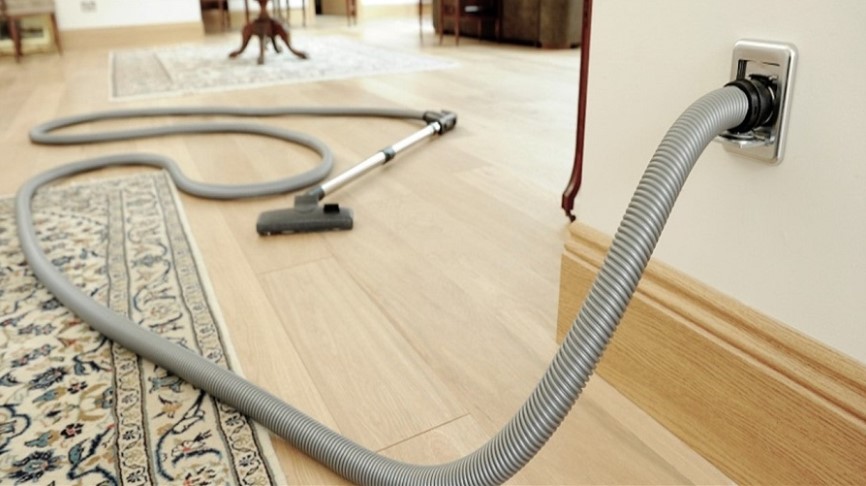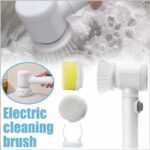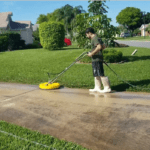A central vacuum cleaner is a powerful, built-in cleaning system that offers superior suction and convenience compared to traditional portable vacuums. Whether you’re considering a central vacuum system for your house or researching the best central vacuum cleaner, this guide covers everything—from how a central vacuum system works to central vacuum system installation and maintenance.
We’ll also explore central vacuum cleaner reviews, compare central vacuum cleaner prices, and highlight top brands like Beam Central Vacuum. Let’s dive in!
What Is a Central Vacuum Cleaner?
A central vacuum cleaner is a built-in cleaning system with a central power unit typically installed in a garage or basement. It connects to inlet valves throughout the home via hidden tubing, allowing you to attach a hose and clean without carrying a heavy vacuum.
How Does a Central Vacuum System Work?
- Suction Power Unit – The main motor generates strong suction, pulling dirt through the tubing.
- Inlet Valves – Wall-mounted ports where you plug in the hose.
- Piping Network – PVC tubing runs behind walls, floors, or ceilings to transport debris.
- Dirt Collection – Dust and debris are deposited into a central canister or exhausted outside.
Unlike portable vacuums, central vacuum systems offer:
✔ More suction power (2-5x stronger than traditional vacuums)
✔ Quieter operation (motor is located away from living spaces)
✔ Improved indoor air quality (no recirculation of dust)

Benefits of a Central Vacuum System for House Cleaning
Why should you invest in a central vacuum cleaner? Here are the top advantages:
1. Superior Cleaning Performance
With stronger suction, central vacuum systems remove deep-seated dirt, pet hair, and allergens more effectively than standard vacuums.
2. Convenience & Ease of Use
No more lugging a heavy vacuum around—just plug the hose into wall inlets and clean effortlessly.
3. Better Air Quality
Since dust is expelled outside or into a sealed canister, central vacuum systems reduce airborne allergens.
4. Increased Home Value
A built-in central vacuum system is a premium feature that can boost resale value.
5. Long-Term Cost Savings
While the central vacuum cleaner price is higher upfront, it lasts decades with minimal maintenance.
Best Central Vacuum Cleaner Brands & Reviews
If you’re looking for the best central vacuum cleaner, consider these top brands:
1. Beam Central Vacuum
- Known for reliability and strong suction
- Offers both bagged and bagless models
- Popular models: Beam Serenity & Beam CV300
2. MD Central Vacuum Systems
- High-performance motors
- Great for large homes
- Check out the MD XTreme 1600
3. Nutone
- Affordable and efficient
- Ideal for mid-sized homes
- Nutone PurePower QPH is a top pick
For detailed central vacuum cleaner reviews, visit Vacuum Advisor.
Central Vacuum System Parts: What You Need to Know
A central vacuum system consists of several key components:
- Power Unit – The main motor that generates suction.
- Piping & Inlet Valves – Network of tubes and wall ports.
- Hose & Attachments – Lightweight hose with cleaning tools.
- Dirt Canister or Exhaust – Collects debris or vents it outside.
- Low-Voltage Wiring – Activates the system when the hose is plugged in.
Replacement central vacuum system parts are widely available from manufacturers and retailers like Central Vacuum Online.
Central Vacuum Cleaner Price: What to Expect
The central vacuum cleaner price varies based on:
- System size (small homes vs. large estates)
- Suction power (measured in Air Watts)
- Brand & features (self-cleaning filters, noise levels)
| System Type | Average Price Range |
|---|---|
| Basic System | $800 – $1,500 |
| Mid-Range System | $1,500 – $2,500 |
| High-End System | $2,500 – $5,000+ |
Installation costs (if hiring a professional) add $500 – $1,500.
Central Vacuum System Installation: DIY vs. Professional
DIY Installation
If you’re handy, you can install a central vacuum system yourself by:
- Planning tubing routes (avoid electrical lines).
- Mounting the power unit in a garage/basement.
- Running PVC piping through walls/ceilings.
- Installing inlet valves in convenient locations.
Professional Installation
For optimal performance, consider hiring an expert. They ensure:
✔ Proper suction balance
✔ Correct piping size and layout
✔ Sealed connections to prevent leaks
Find certified installers via Central Vacuum Professionals.
Maintaining Your Central Vacuum System
To keep your central vacuum cleaner running smoothly:
- Empty the dirt canister regularly.
- Check filters (replace or clean as needed).
- Inspect hoses for clogs or cracks.
- Test suction power periodically.
Most systems require minimal upkeep, making them a long-term cleaning solution.
Final Thoughts: Is a Central Vacuum System Worth It?
If you want a powerful, convenient, and long-lasting cleaning solution, a central vacuum cleaner is an excellent investment. While the central vacuum cleaner price is higher than portable models, the benefits—better cleaning, improved air quality, and increased home value—make it worthwhile.
For the best central vacuum cleaner, research brands like Beam Central Vacuum and read central vacuum cleaner reviews before purchasing.
Ready to upgrade? Explore top-rated systems at Amazon or Home Depot.
FAQs About Central Vacuum Cleaners
Q: How long does a central vacuum system last?
A: With proper care, 20–30 years—far longer than portable vacuums.
Q: Can I retrofit a central vacuum into an existing home?
A: Yes! Retrofitting is common, though installation may be more involved.
Q: Do central vacuums increase home value?
A: Yes, many homebuyers see them as a premium feature.
For more insights, visit Consumer Reports.
By choosing the right central vacuum system for your house, you’ll enjoy a cleaner, healthier home for years to come. Happy cleaning!




